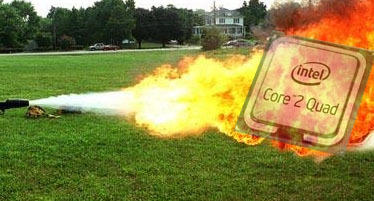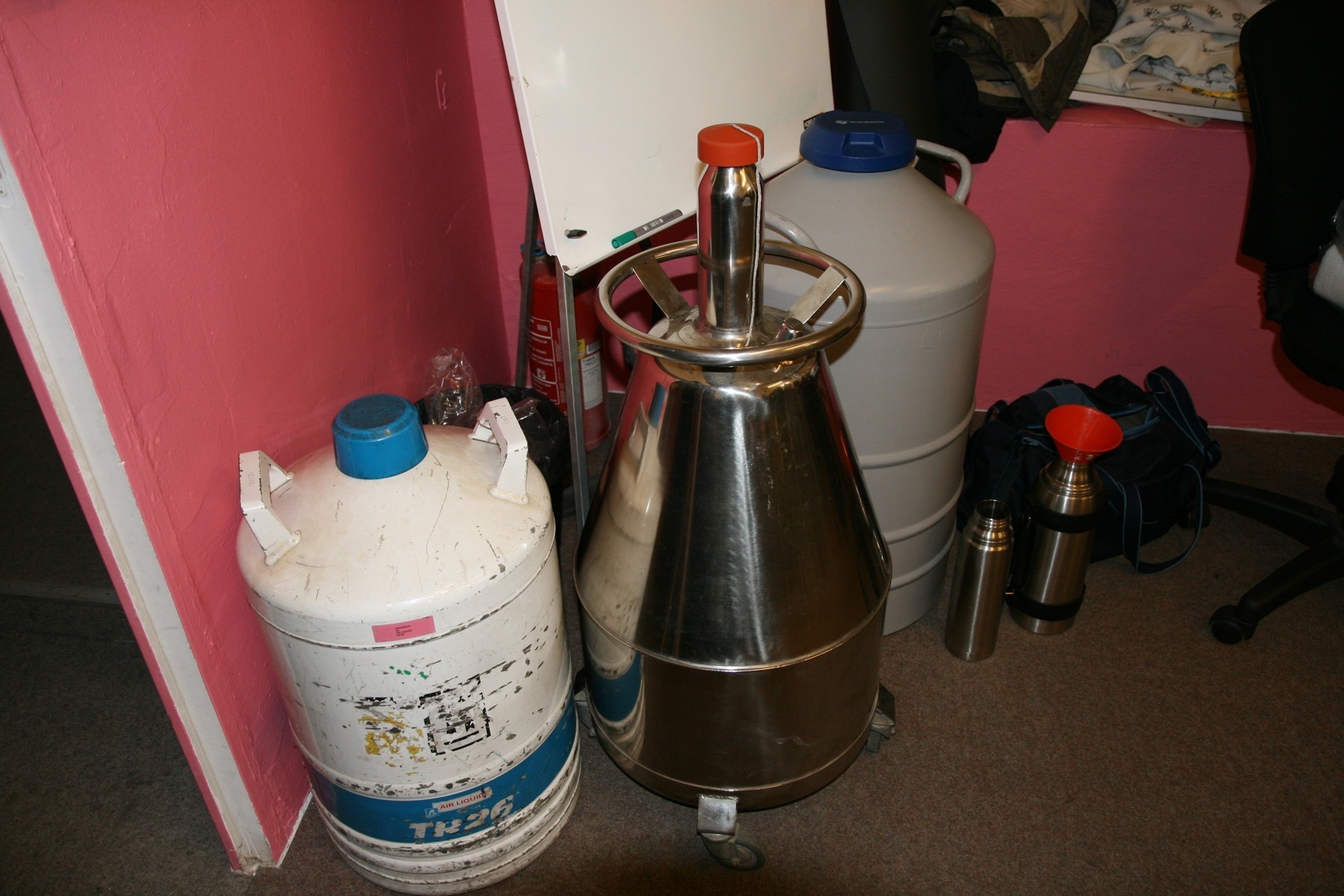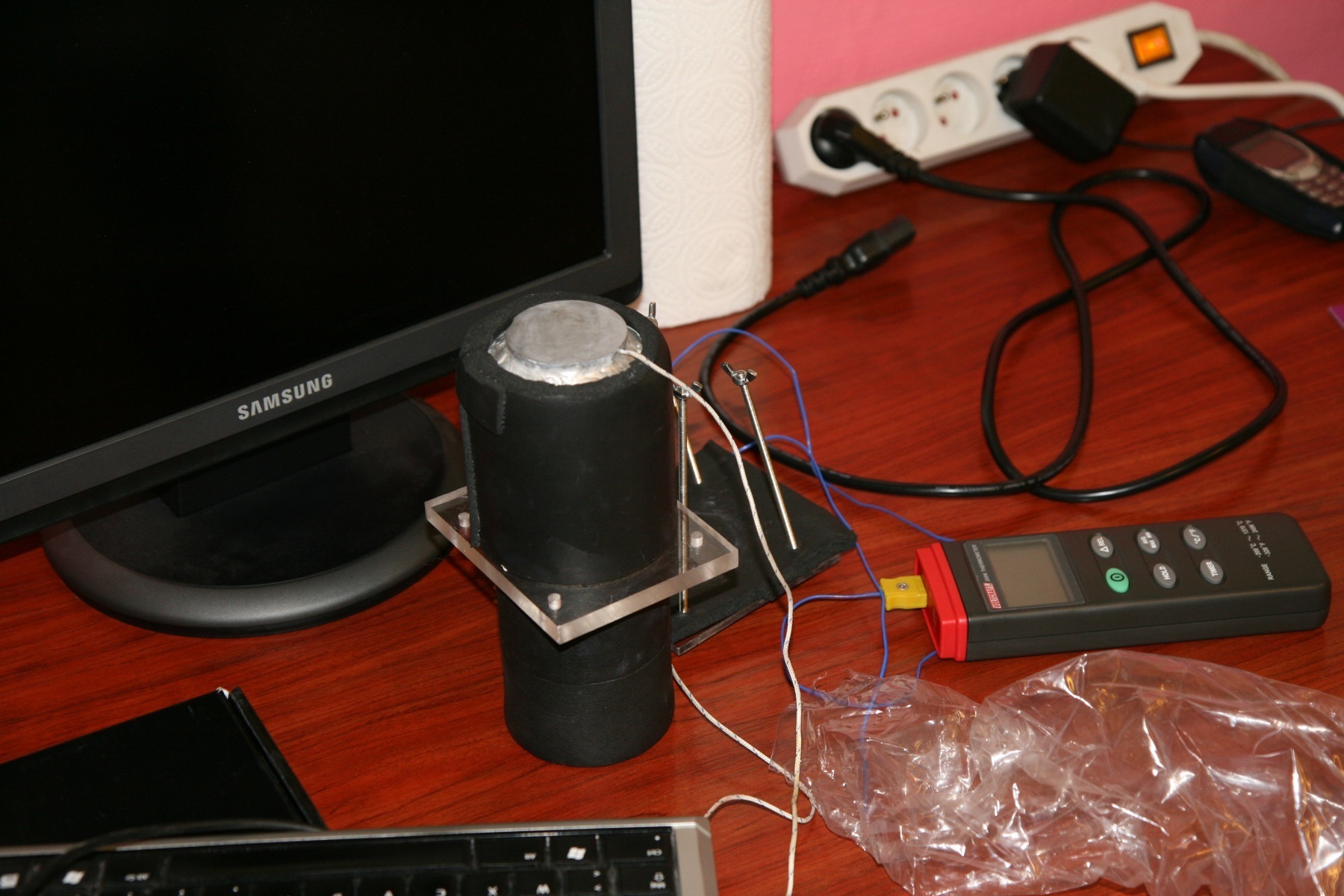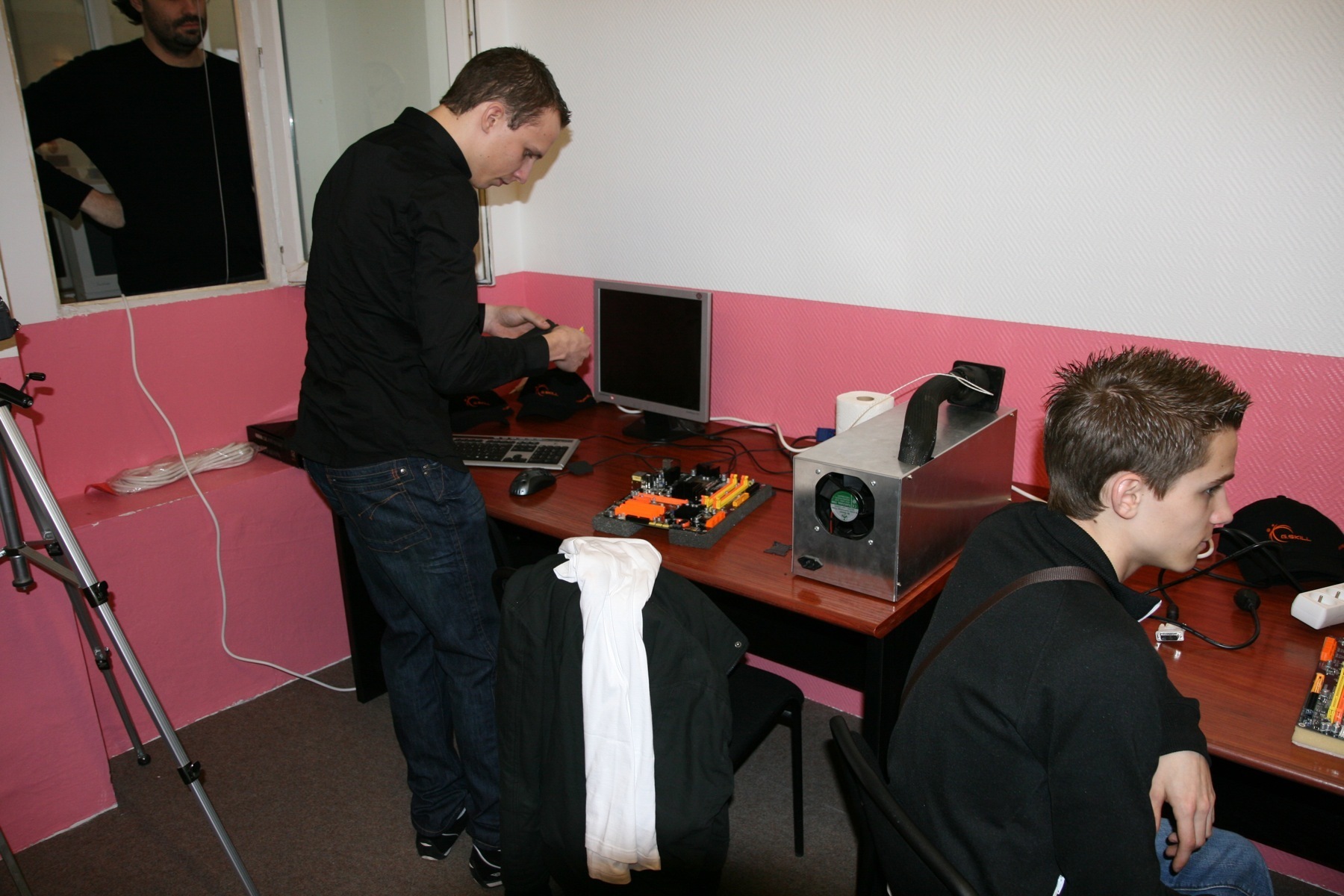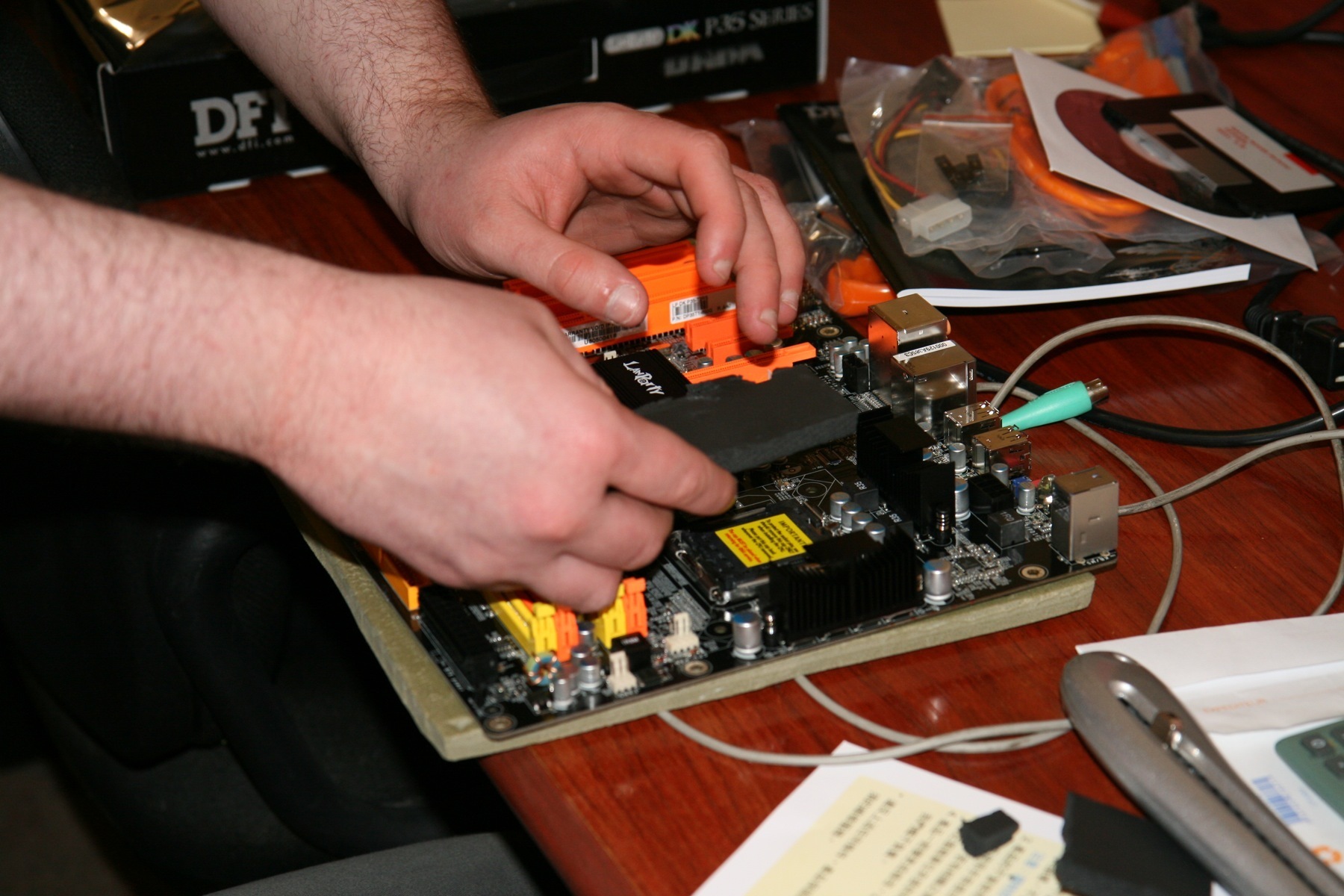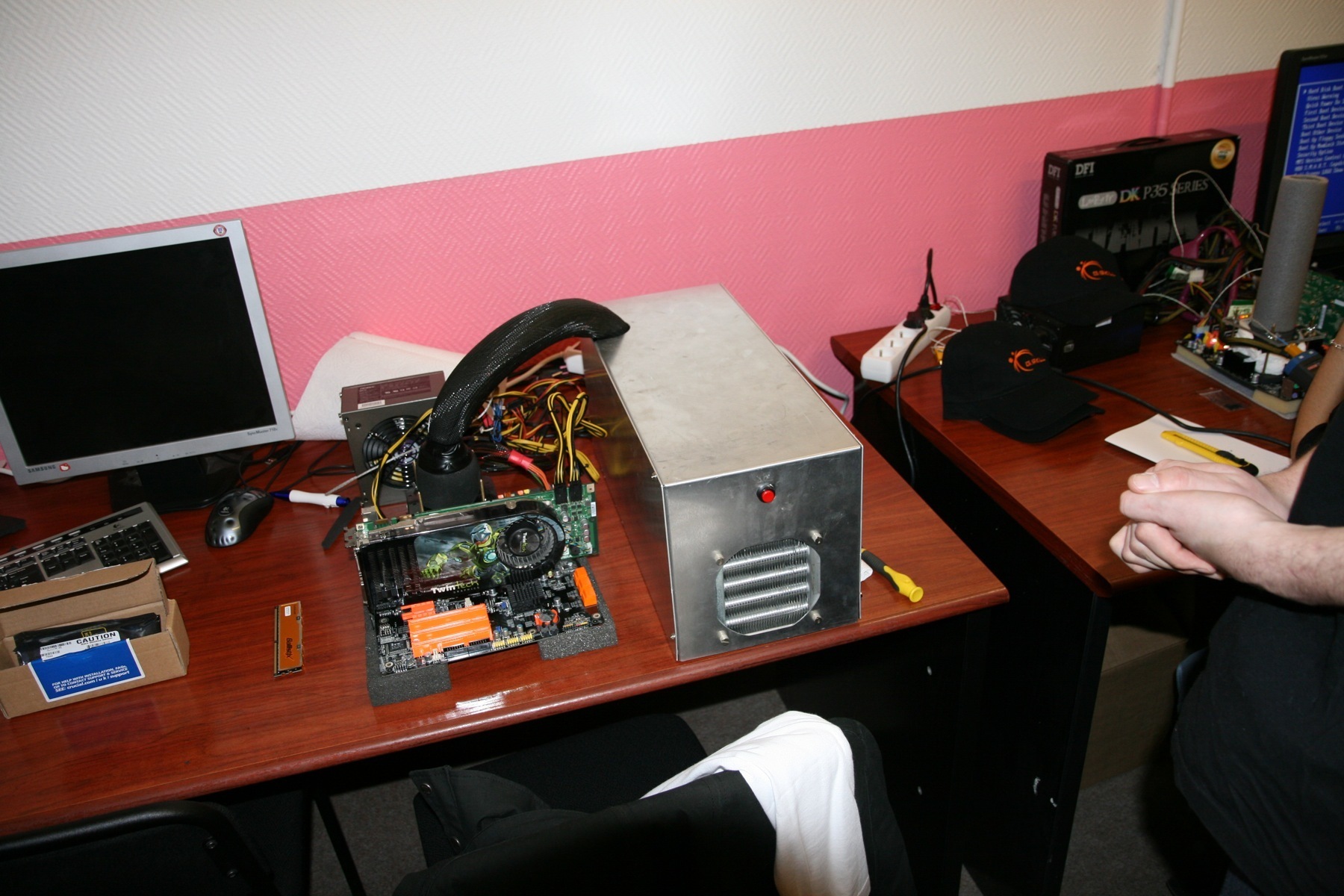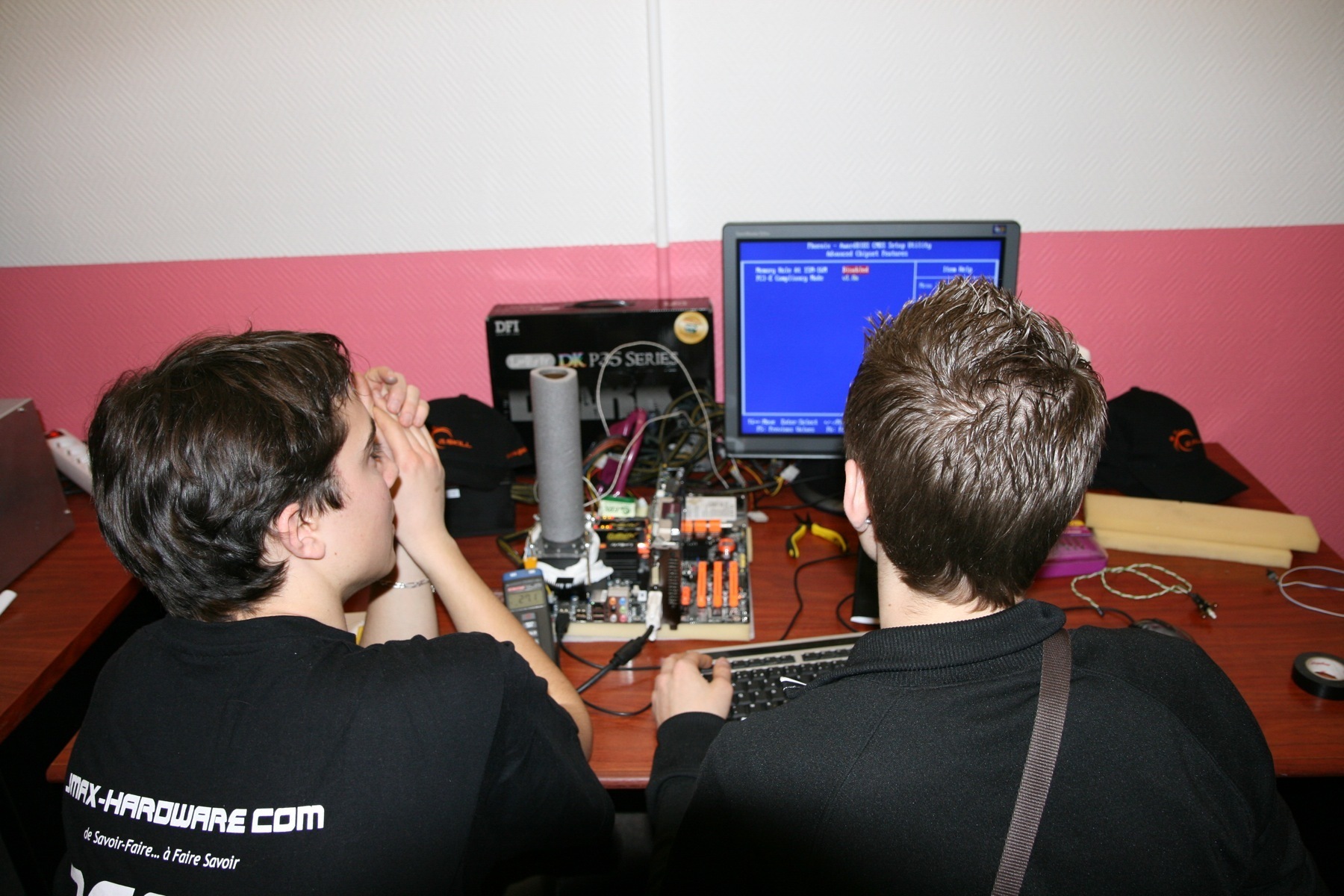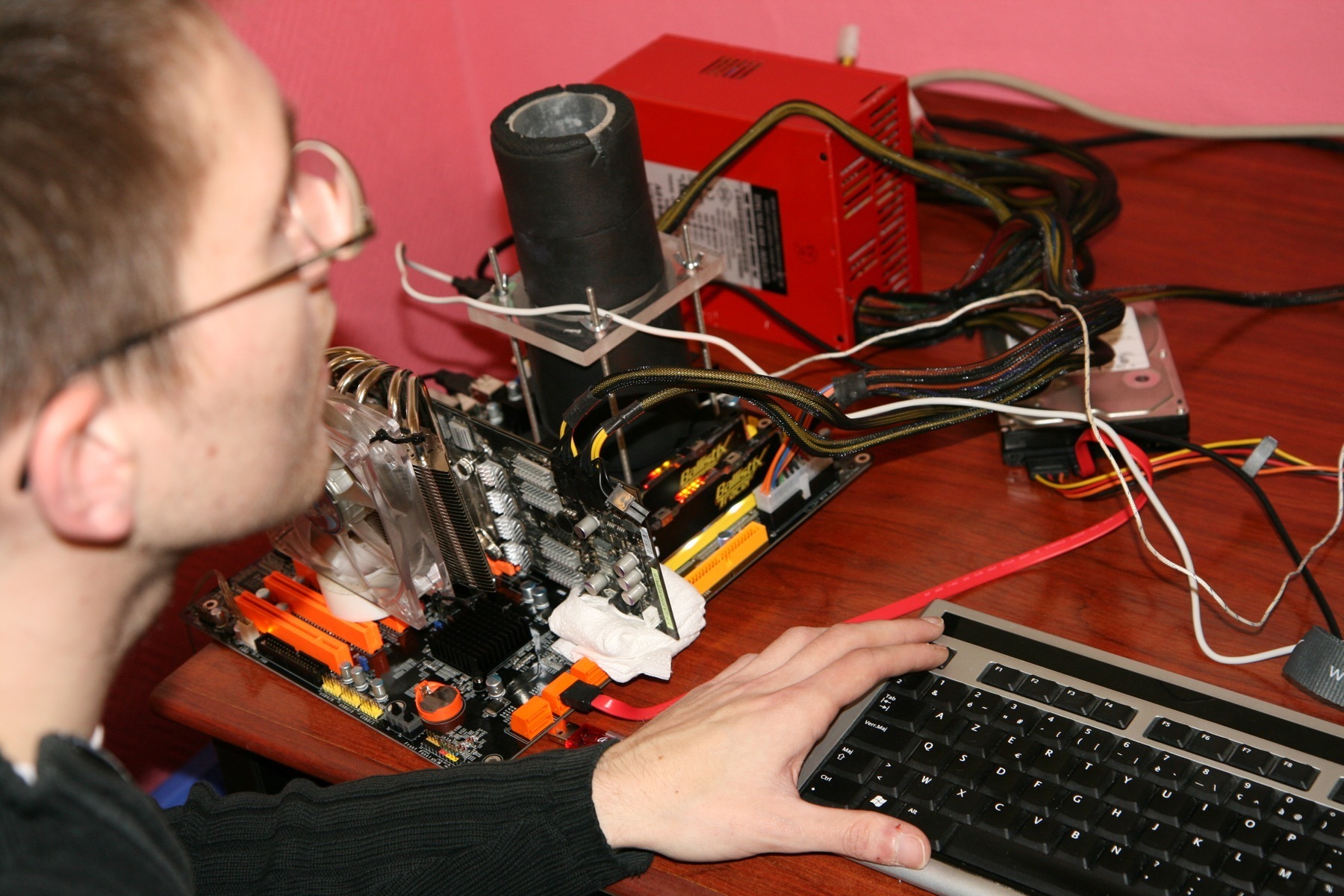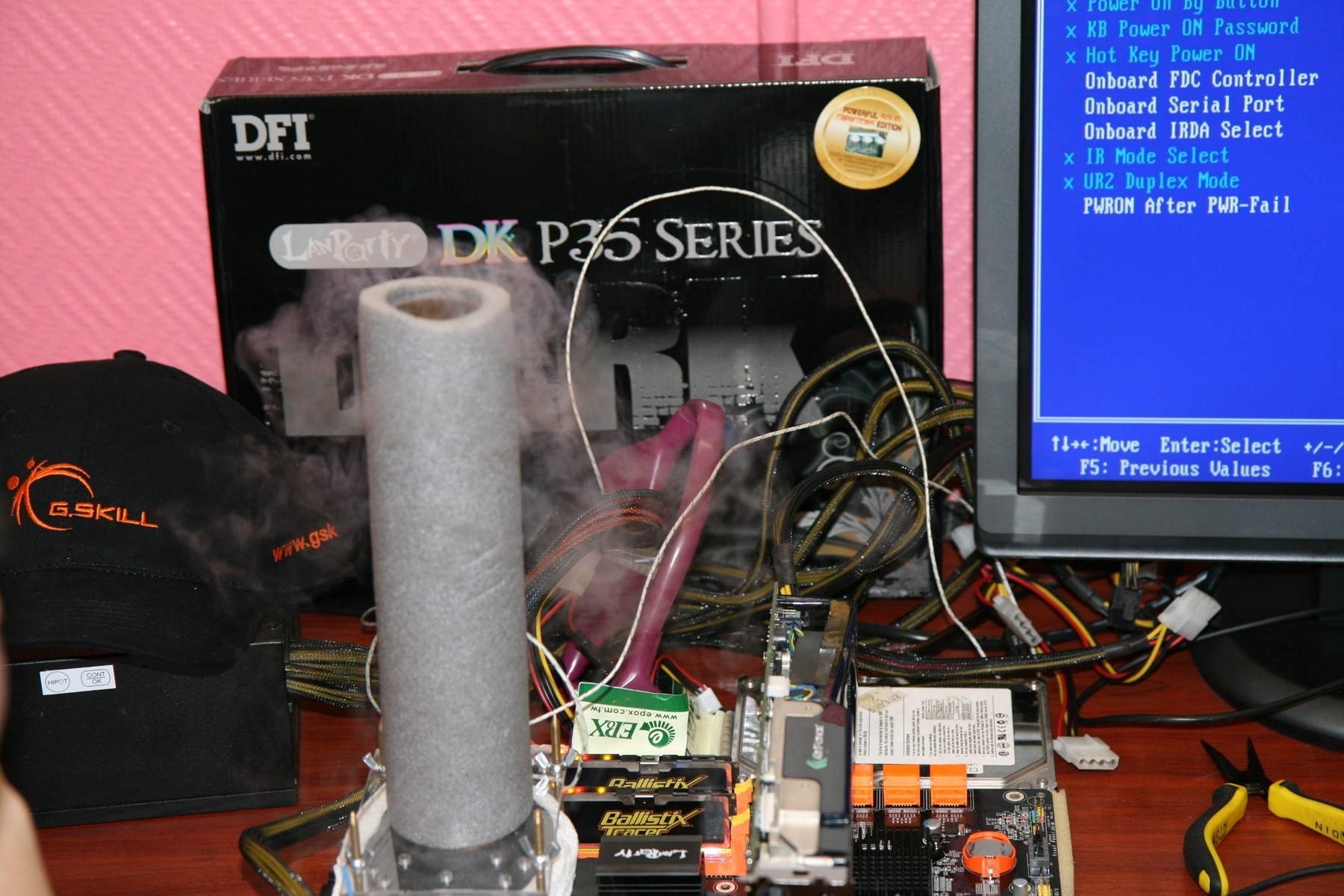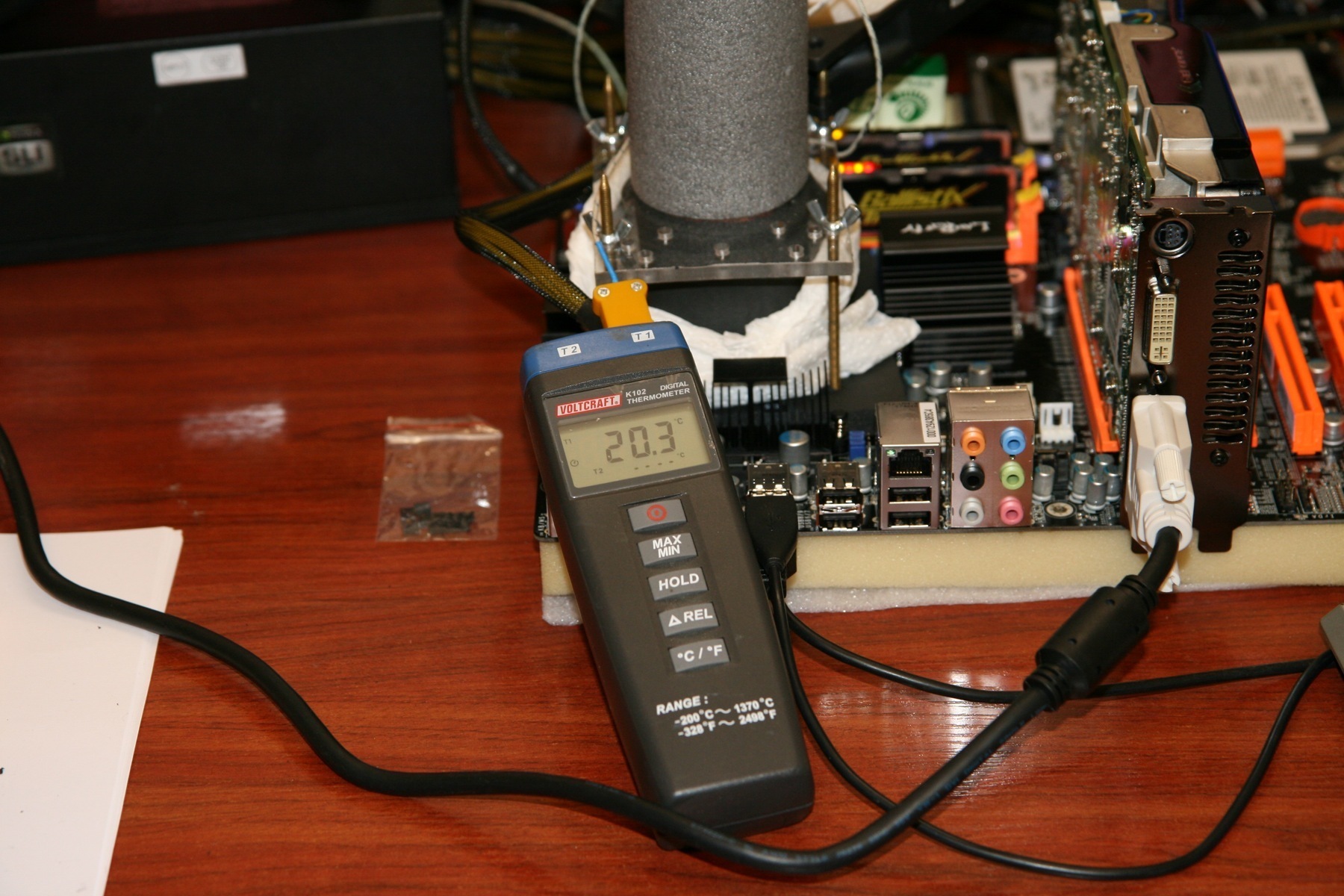Overclocking: Tom's Sets World Record
On Saturday February 23, members of the Jmax-Hardware, Tom’s Hardware, and Tom’s Guide forums met in the offices of Bestofmedia. They had come to try to set a new world record for overclocking. And they succeeded.
The team consisted of 13 members: six from Jmax-Hardware, four from the Tom’s Hardware forums, and three members of the Tom’s Guide forums. The hardware used to set the record consisted of four test platforms; three using a liquid-nitrogen cooling system and one with a compressor-based (DoD or Direct-on-Die) cooling system.
We memorialized the day in a series of photos you’ll find on the following pages.
View the video taken at Bestofmedia’s offices here.
The containers of liquid nitrogen ready to be used to super-cool the processors. In liquid form, nitrogen boils at -196°C.
One of the canisters that will hold the liquid nitrogen used to cool the processor. It’s set on top of the CPU, in place of the standard cooling system.
The group gets ready. Members of the Tom’s Guide forums and Jmax-Hardware are on hand to try to break the records.
Cutting a foam protector for the motherboard. The foam will insulate the parts of the motherboard that might be damaged by condensation caused by the extreme cold (liquid nitrogen is stored at -196°C). The precautions paid off - all equipment was still functional at the end of the day (which is not always the case).
A compressor; another method of overclocking. It’s basically a refrigerator. Gas is compressed, increasing its temperature, and then cooled by a flow of air at room temperature. Once decompressed, its temperature drops and the cold is used to cool the processor. The gas is compressed and decompressed in cycles within a closed loop.
Adjusting the BIOS settings. This is an essential stage before starting. While the overclocking is done mostly under Windows, a properly adjusted BIOS is an advantage.
Get Tom's Hardware's best news and in-depth reviews, straight to your inbox.
Even the graphics card is insulated (using seat-of-the-pants engineering, that is). You can see the liquid-nitrogen canister placed top of the processor.
When the liquid nitrogen is poured in it partially vaporizes, producing white smoke.
The temperature starts to drop: 20°C.
Pouring liquid nitrogen on your hands can be a fun experiment. Of course, you should avoid leaving your hands in it for any length of time since it’ll cause cold burns.
Tom's Hardware is the leading destination for hardcore computer enthusiasts. We cover everything from processors to 3D printers, single-board computers, SSDs and high-end gaming rigs, empowering readers to make the most of the tech they love, keep up on the latest developments and buy the right gear. Our staff has more than 100 years of combined experience covering news, solving tech problems and reviewing components and systems.
-
JohnnyMash Nice job of hitting 5+GHz! While it is usually customary to go into huge amounts of detail when reporting a LN2 'dyno run', there is very little information and a couple too many shots of beaming tech-heads and them eating at Macca's, and general uninformative detail in system photos. Given that this is a 'world record', it was quite unspectacular.Reply
Give the camera to that balding dude next time! -
fallen2004 wow dats impressive, kinda a waste of time n money bt stil its funReply
Bt y use a P35 board wouldnt an X48 have been beter?
